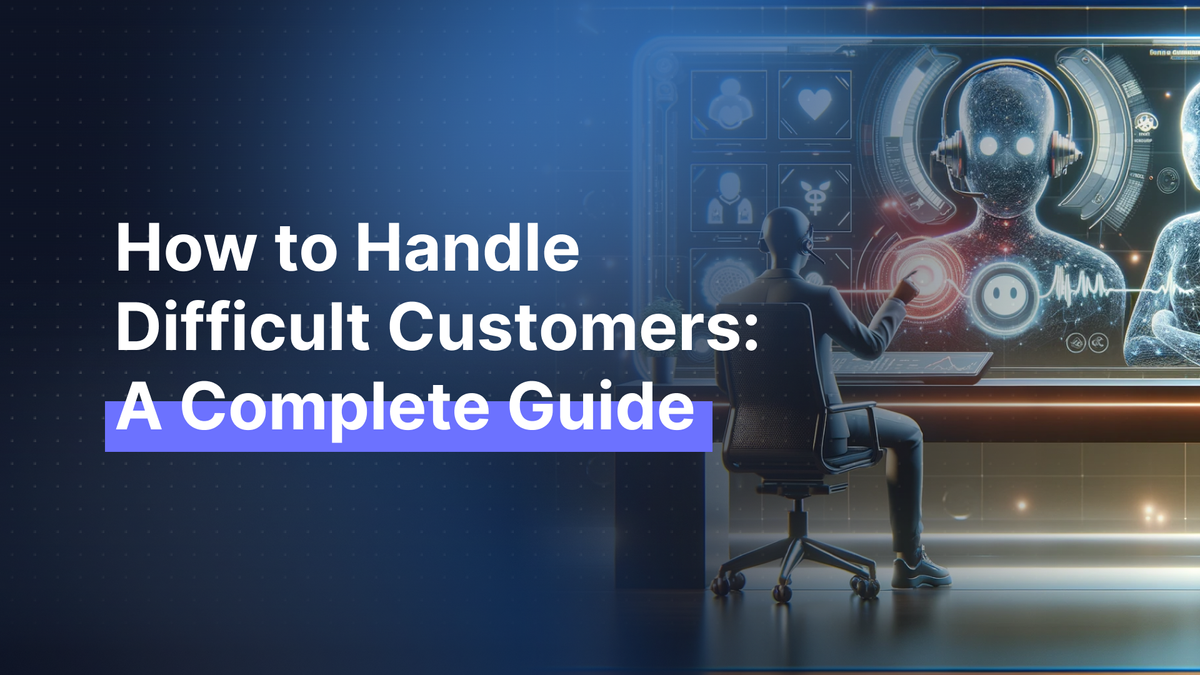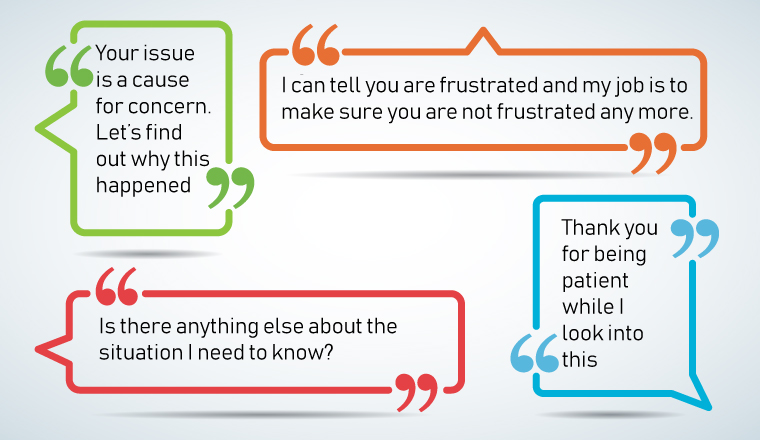Dealing with demanding clients is rewarding yet challenging. To help you out,...

Providing proactive and client-centric customer service is essential for the success of any organization. However, it could be a challenging task to deal with difficult or unsatisfied customers on a daily basis. One has to be equipped with excellent skills to tackle these sorts of customer service operations.
How you interact and deal with customer complaints reflects directly on your business culture and priorities and deeply impacts your sales. A study shows that 93% of customers are willing to switch companies after one bad experience. Learning how to handle a difficult customer through effective techniques and a positive attitude helps you improve your customer service and overall business procedures.
Keep reading to learn more about dealing with difficult situations and clients in customer service.
Developing a positive relationship with your customers is the most important factor that affects your brand's reputation, customer retention, and business revenue.
According to a survey on customer behavior, 82% of customers who stopped doing business with a brand did it because of bad customer service.
Customers may always be right, but it is not always easy to deal with complaining or difficult customers. However, managing a negative and challenging situation could be an amazing opportunity to learn from your mistakes, flourish your business, and protect your brand's reputation. Therefore, to provide a customer-centric service while maintaining your sanity, learning how to handle a difficult customer is essential.
Before we move on how to deal with difficult customers, here are four different examples of challenging people that customer support staff have to deal with regularly.
An angry customer is someone who is extremely dissatisfied with the products and services of your company. There could be different reasons behind the negative feedback, such as:
These, and many other reasons, can make a customer raise their voice or communicate rudely with customer service.
How to respond: Remember, it is normal for an agitated customer to voice their feedback in a harsh or passive-aggressive manner, but you should never respond similarly. Take a moment to relax, offer a quick apology, and assure them that you are working on finding a favorable solution for them.
Quiet with minimal interaction, silent customers are usually the opposite of angry customers. These are people who consume your company's products or services but never share any opinions or reviews. In case of any problem, they would rather stop doing business with you than to communicate with the customer service.
According to a survey, 96% of customers prefer to keep their bad experiences private from the company. This means silent customers are your biggest asset, and businesses should actively engage with them to improve their services.
How to engage:
As shown by the name, indecisive customers are those who need help to make a clear decision. They usually come to customer service with a lot of questions and keep switching between different options. This happens because the customer needs help articulating their problems or needs help understanding their options completely. Dealing with indecisive customers is a regular occurrence, especially if you are working in interior design, travel planning, or vehicle dealing.
How to accommodate: To avoid confusion and save time, communicate to indecisive customers in a clear and confident manner. Briefly explain all the possible suggestions to them and how they can get the maximum benefit from each.
Also known as "Entitled customers," they are demanding consumers who don't have a clear understanding of how you can help them. These people usually have unrealistic expectations, such as demanding extra discounts, spontaneous deliveries, and similar requests that are way beyond your scope of work.
How to Tackle: The only way out is to set boundaries with clear communication at the beginning of the conversation. Explain to them what your team is capable of so they can manage their expectations accordingly.
Here are some effective techniques and examples of dealing with difficult customers that can help you in your day-to-day customer operations.
Let the customer speak, and only argue with them once they are done explaining. People are contacting you to communicate what is wrong or missing in your services and how you can improve it. Active listening with a calm attitude helps you give proper attention to the speaker and understand their problem.
A good way to practice active listening is to use verbal affirmations while listening to a customer so they know that you are paying attention and acknowledge their problem, such as:
Active listening reduces misunderstandings by 40%
Imagine ordering your favorite dress after saving every penny, only to receive it months later in a torn condition. Sounds disappointing? This is exactly the feelings of the customer showing their frustration on the call.
Putting yourself in customers' shoes will help you understand their situation better. When a customer is explaining their problem, try to empathize with them and communicate in a way that shows your genuine interest. Clarify the situation by asking more questions and help them relax by reassuring them that you take responsibility for their loss and are working on a solution.

When talking to a customer, keep your tone friendly yet straightforward. Communicate with your customers professionally and respectfully. As a customer support staff member, your behavior directly reflects your employer and their business ideologies, so be mindful of anything you say.
Keeping a friendly demeanor can help your customers easily share their feedback and build a positive relationship with your company.
The end goal of every customer service is to make the customers happy and satisfied. Once you have addressed a customer's concern, try to come up with a reasonable solution. Briefly explain the company's SOPs regarding refund, exchange, or other grievance-handling procedures. This can help you find a better acceptable solution for both parties.
A happy and satisfied client goes a long way. Offer them a refund, discount, or free-of-cost service, which will help you get more customers on board.
Good customer service goes beyond offering quick fixes and solutions. It is more about building strong and long-term relationships with your clients. It provides them with a space to feel seen, heard, and acknowledged. Once the problem has been resolved, remember to take feedback from your client and ensure that the suggested solution works fine for them.
AI technology in customer service is not limited to automation only. It has been extensively used in all major areas of customer support to ensure that customers receive seamless 24/7 support from the comfort of their homes. As per the latest studies, by 2025, 95% of customer interactions will be powered by AI.
Using AI applications such as AI-powered chatbots and automated ticketing can help you go to great lengths in dealing with difficult customers.
AI chatbots are developed with the help of a knowledge base and internal data. They are designed to answer the majority of customer queries regarding the products, services, shipments, and complaint SOPs of a company. Chatbots can answer FAQs and enable a self-service model through guides, manuals, and informational articles.
These applications use NLP to interact with humans in a conversational and engaging way, so they only feel the need for agents sometimes.
Using AI chatbots in customer service helps you provide 24/7 global support to your customers; they can be quickly transferred to live agents in case of additional assistance or guidance.
Customers need quick access to support staff; using an AI-powered ticketing system in your customer service can help you streamline your service operations. AI automated ticketing helps you categorize into different categories and deal with difficult or impatient customers on a priority basis.
Dealing with difficult customers may sound like a huge deal. However, it could be a great opportunity for a business to grow and prosper. Handling different types of customers through active listening and open communication can help you tackle many customer service challenges and provide a positive customer experience.
In addition, using AI support and AI chatbot customer service automates your customer support operations. It provides constant 24/7 support and help to customers who are otherwise difficult to handle by human agents.
Do you want to learn how to handle a difficult customer? Reach out to Aidbase. With an AI-powered support system of chatbots, ticketing, and email automation, Aidbase helps you deal with all sorts of customers and provide them with an equally seamless customer experience.